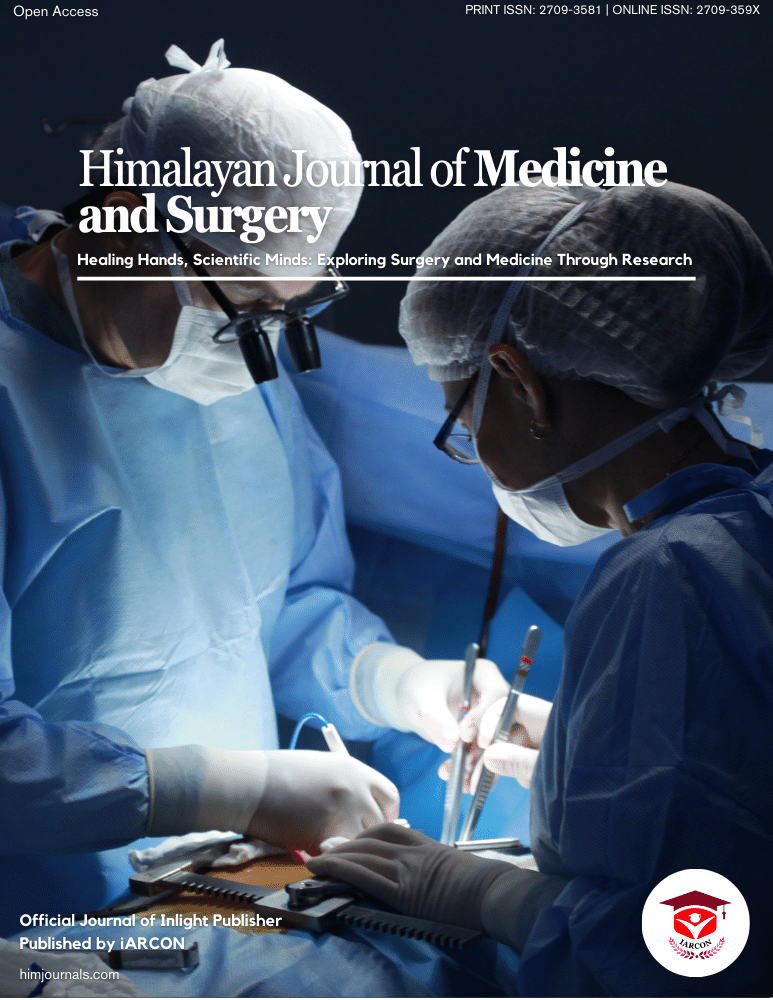Acute angle closure glaucoma (AACG) is a common ocular emergency that needs to be identified quickly and treated appropriately to prevent permanent vision loss. The immediate requirement to reduce intraocular Pressure is a common topic. This is typical achieved with the use of medical treatment, such as miotics, beta blockers, carbonic anhydrase inhibitors, and Osmotic decongestants [3].
Classification
Primary Acute Angle-Closure Glaucoma: A preexisting narrow anterior chamber angle closes, causing primary acute angle-closure glaucoma (acute angle closure crisis). The predisposing variables include inheritance, like in Inuit and Asian populations, as well as shallow anterior chambers that may be brought on by farsightedness or tiny eyes (short axial length). Since pupillary dilation is what causes the angle to close, it can happen while watching a movie in a darkened theatre, under stress, after taking anticholinergic or sympathomimetic medications (like nebulized bronchodilators, atropine, antidepressants, bowel or bladder antispasmodics, nasal decongestants, or tocolytics), or, very rarely, as a result of pharmacologic mydriasis Recurrent headaches can be a symptom of subacute primary angle-closure glaucoma [4].
Secondary Acute Angle-Closure Glaucoma
Secondary acute angle-closure glaucoma may develop as a result of different medicines, anterior uveitis, lens dislocation, hemodialysis, or other conditions. Although the symptoms are the same as in primary acute angle-closure glaucoma, differentiating them is crucial due to therapeutic variations.
Clinical Findings
Although there are subacute occurrences, patients with acute glaucoma typically seek treatment right away due to excruciating pain and clouded vision. Halos around light are frequently connected with hazy vision. There may be nausea and pain in the abdomen. The pupil is somewhat dilated and not sensitive to light, the cornea is hazy, and the eye is red. Typically, intraocular pressure exceeds 50 mm Hg, resulting in a palpably hard eye [5]. Acute glaucoma must be differentiated from conjunctivitis, acute uveitis, and corneal disorders.
Treatment
Reducing intraocular pressure is the first line of treatment, regardless of the underlying aetiology. With topical drugs that lower intraocular pressure, a single 500-mg intravenous dosage of acetazolamide, followed by 250 mg orally four times a day, is typically sufficient. If acetazolamide is unsuccessful, osmotic diuretics like oral glycerin, intravenous urea, or mannitol (dose: 1-2 g/kg each) may be required. The mechanism will determine the final course of action [6].
Primary
Once the intraocular pressure has begun to decrease in primary acute angle-closure glaucoma, the underlying angle closure is treated with topical 4 percent pilocarpine, 1 drop every 15 minutes for an hour, followed by four times daily. The only effective treatment is cataract removal, surgical peripheral iridectomy, or laser peripheral iridotomy. As a first-line treatment for people with primary angle-closure glaucoma, cataract extraction is becoming more popular.
Unless the unaffected eye has already undergone cataract or glaucoma surgery, early cataract extraction or prophylactic laser peripheral iridotomy should be considered for all patients with primary acute angle closure [7].
Secondary
In secondary acute angle-closure glaucoma, additional treatment is determined by the cause.
Prognosis
Within 2–5 days of the start of symptoms, acute angle-closure glaucoma that is left untreated causes severe and permanent vision loss. Patients who are affected must be watched for the onset of chronic glaucoma.


